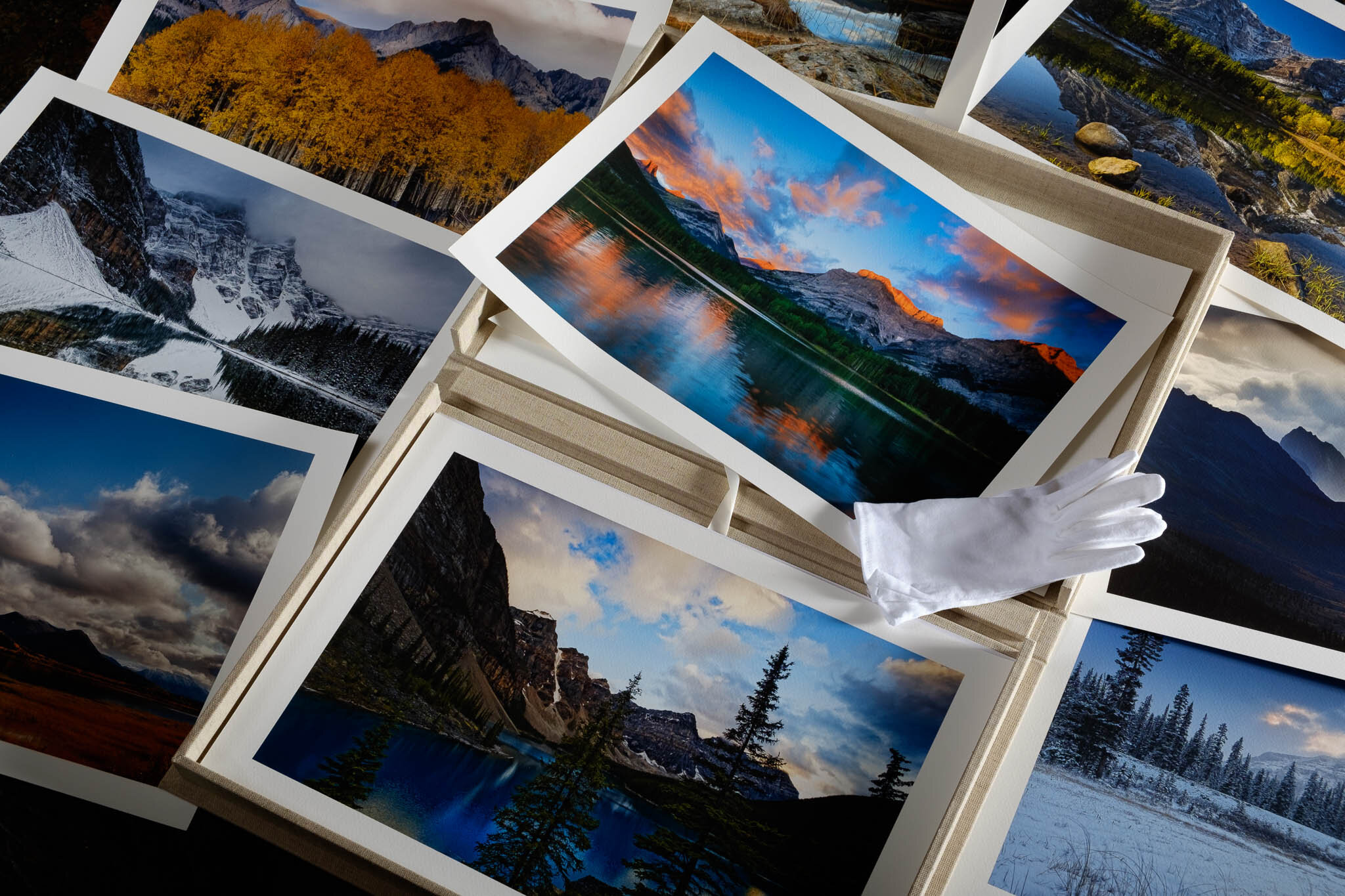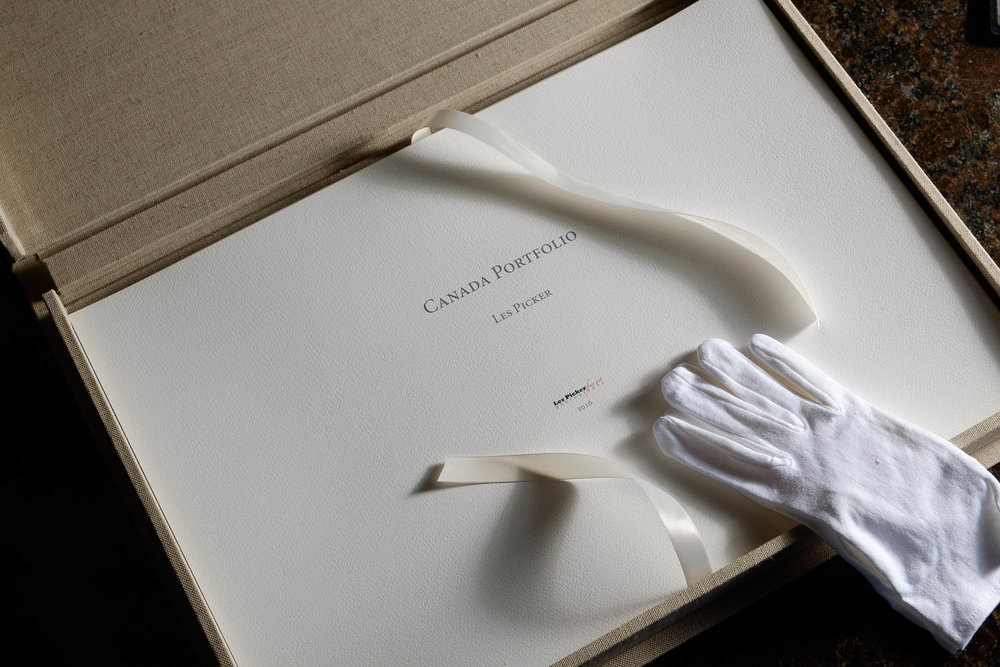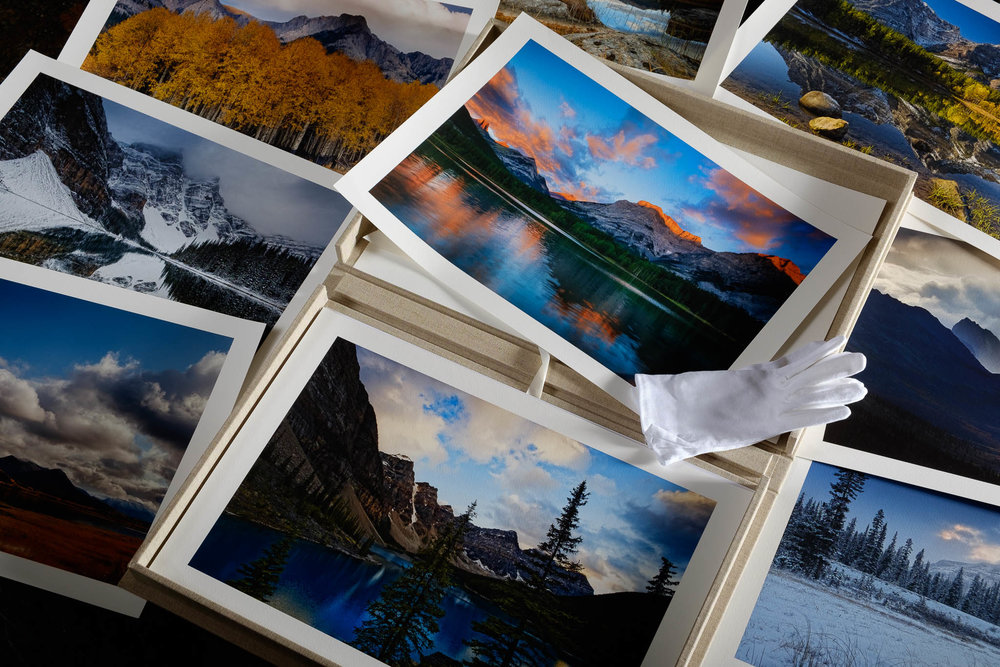by Les Picker
Ansel Adams famously said, “The photograph is the score; the print is the performance.” I’d like to elaborate on that theme for those of you contemplating fine art printing and for experienced printers looking for new perspectives.
I grew up in New York City, where my father was a highly regarded amateur photographer. It was natural for us to go to museums and galleries to see exhibits of fine art prints by some of the greatest photographers; Dorothea Lange, Ansel Adams, Edward Weston, Henri Cartier Bresson, and others. I remember strolling through those galleries, mesmerized by the magic of the printed art. So, for me at least, prints were an organic part of the art of photography.
My grandfather was a professional photographer. He converted a bedroom in his apartment to a darkroom. To this day I remember the magic of seeing an image suddenly appear on a blank sheet of paper as worked under that red light.
Today the world of photography is drastically different. In the digital age, it is no longer a requirement to print, and this is a true sea change. In the past, the only yardstick we could use to measure an artist’s work was through the print. Today we have the Internet. There are some popular photographers who probably have never actually printed a single one of their images. They post on Instagram and have tens of thousands of followers. If they need a print they send the file to a lab.
So, Why Print?
With the arrival of the Internet and the profusion of digital printing labs, it makes perfect sense to ask, why bother to print? The answer is both simple and complex and if you consider yourself a serious photographer, whether amateur or pro, it’s worth taking the time to ponder it.
Simple first. If you want to sell your work, you have to print it. Most people do not buy digital images. Magazine editors are an exception, but they pay pauper’s pocket change for that privilege nowadays.
Not that selling prints is easy or should be your main objective with your photography. I’m just saying that if you want people to hang your art on a wall, you’ve got to print it.
Okay, so why not just use a lab? If you’re thinking of selling inexpensive prints or want to gift them, sure, go ahead and use a lab. But, I’m here to tell you why you shouldn’t. If you’re a serious artist, that is.
There is nothing at all, in anything that you presently do to advance your photography, that will elevate your art like personally printing your work, whether in the wet darkroom or digitally. Nothing. Full stop.
Printing is an extension of your photographic art. It requires you to view your work critically. If your work is not up to par in camera, it will look horrible on paper. Even if it is technically perfect, nurturing it to a final print is like going from making a baby to actually birthing one (with apologies to all you women out there for this awful and completely inaccurate analogy). The process is difficult and oftentimes painful. Creating a print forces us to scrutinize our art at a level that challenges our perceptions of our own work (and even our self esteem, truth be told).
But printing also works in reverse. As you become more attuned to extending your art to the print, you begin to reassess what you choose to capture in camera, how you capture it and, most importantly, why you choose to capture it. While in the field you start to imagine what the image will look like in print. And that is a true gift. You will begin to think through your imagery, to pre-visualize the composition and the resultant print, and to slow down.
Here’s a secret that professionals know but don’t often talk about. One of the major differences between a successful, experienced pro and an amateur is that the pro knows when not to take a picture. I see so many photographers desperately press down on the shutter release at 12 frames per second like their lives depended on it, hoping that one of a thousand shots will work. Understanding that your final statement of your art will be evidenced on paper will slow down that process and result in far better images in camera.
And More
There is another aspect of printing that I feel doesn’t get enough attention. I’m talking about the tactile sensuality of fine art paper itself. In today’s world I believe we have the finest photographic art papers ever made. In our studio we use Moab Fine Art papers (a division of Legion Papers) and we are sponsored by them. Of course there are other wonderful paper manufacturers out there. Still, when we handle a printed sheet of Moab Entrada Rag Textured, for example, the tactile sensation itself adds to the artistic experience. I know that sounds a bit esoteric, but that’s the point. The reverence with which you hold the final print, by definition will make you a more thoughtful photographer. Call it the Zen of Photography or whatever you will, but don’t knock it until you have experienced it yourself.
Did you know that the average length of time a person spends scanning an Internet image is 2.3 seconds? Contrast that with how many minutes someone spends viewing a fine art print. ‘Nuf said.
And speaking of viewing Internet images, I frequently watch people spending time on Instagram and “liking” images. I am stunned by how quickly they are able to scan and hit that heart emoji. I asked a young man at an airport how he was able to judge them so quickly. “Oh, if the picture jumps out at me, I know that I like it.” Really?
So this is what so many photographers do to get that fleeting attention. They ramp up the contrast, clarity or whatever. They super-saturate and over-sharpen. They over-HDR images to gain followers.
Working an image to print, especially in black and white, makes you appreciate tonality. It gives you an educated understanding of subtlety. Prints that celebrate minimalism are lauded worldwide. Collectors pay boku bucks for such works.
Consider the Source
Of course I could be criticized for this being a self-serving blog, as my assistant and I teach digital fine art printing in our Maryland studio. I have written an e-Book on fine art digital printing (available free due to the generosity of our sponsors, Moab and X-Rite). I frequently lecture on the topic and serve as a judge at print competitions. And I sell my fine art prints.
But in my defense, I did not come to fine art printing easily. Truthfully, way back when I hated the wet darkroom and its carcinogenic chemicals. Plus I’ve never been a patient person and taking an entire day to generate one measly print did not fit my definition of productivity. And, as an environmentalist, the thought of chucking those chemicals down the drain did not please me. But, having been raised to appreciate fine art prints, I was delighted by how quickly digital printing evolved.
And the papers! We are living in the golden age of fine art papers, with literally hundreds of wonderful choices. Printers have become so sophisticated and reasonably priced they are marvels of engineering, putting out prints that are a joy to behold. So for me, my workflow doesn’t end until I see that special image on fine art paper.
There are more than a billion people out there who consider themselves photographers. As long as they enjoy what they do and what photography does for them, that’s fine, no matter where their workflow ends. But to rise to the level of a true photographic artist, nothing is as helpful and enduring as printing your own work.
“The photograph is the score; the print is the performance.”















